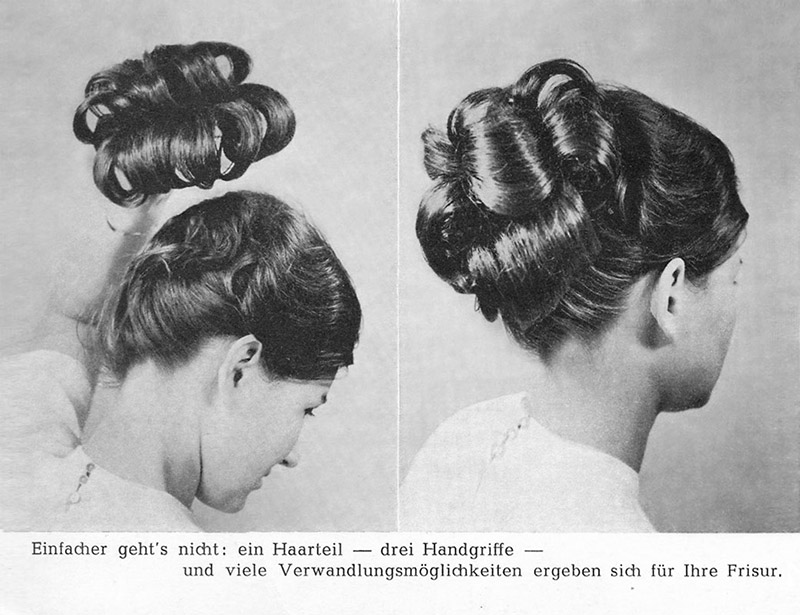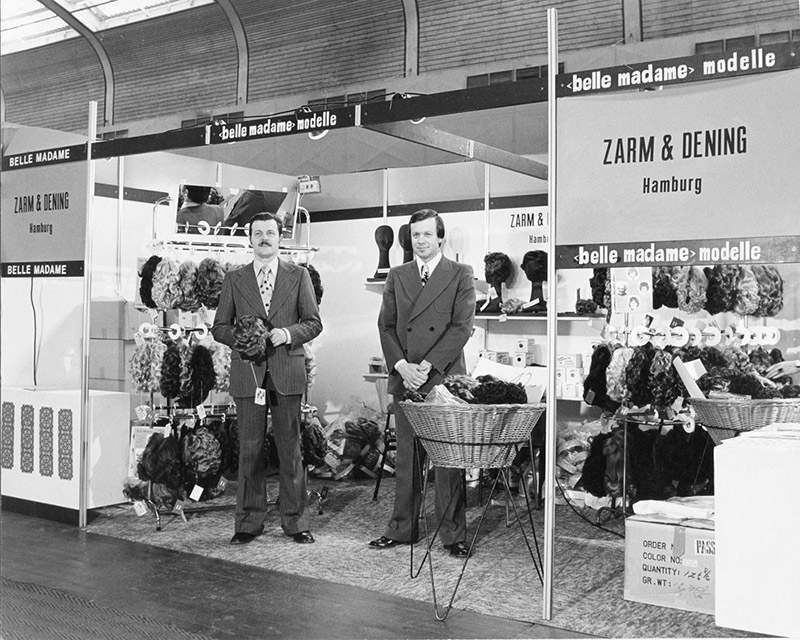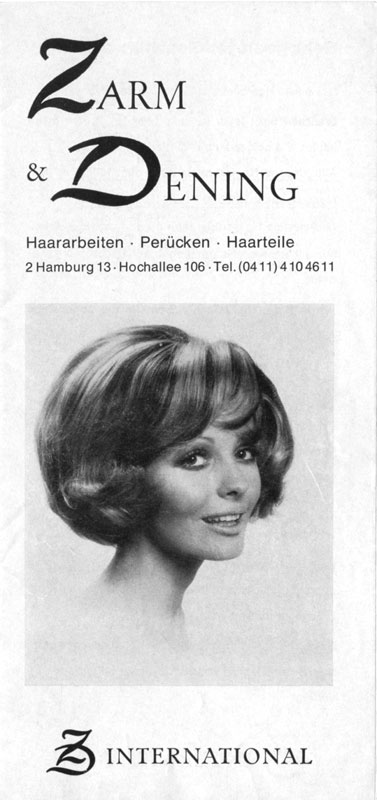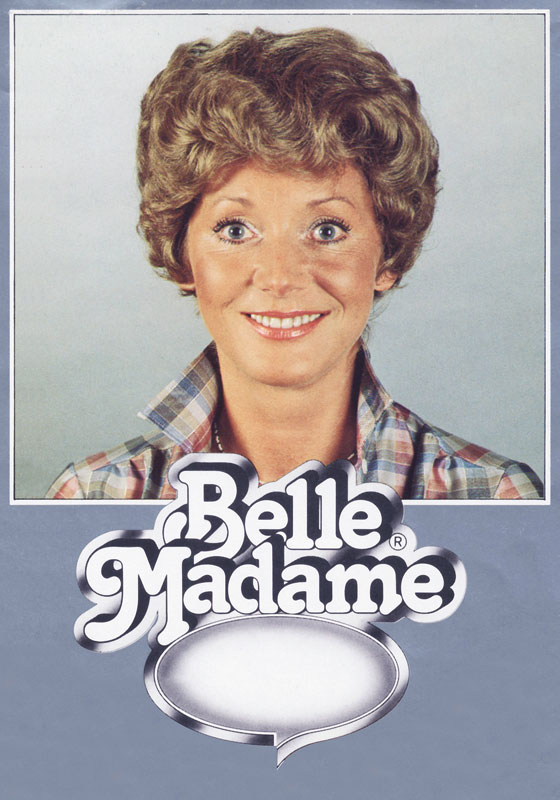Company
DENING HAIR GMBH from Hamburg (Germany) is a specialist for wigs, toupees, extensions and hairpieces.
DENING HAIR GmbH is a family-run company that have been active in the alternative hair business for over 59 years.
We are based in the cosmopolitan city of Hamburg, more precisely in the modern city district Eimsbüttel.
Specialised in the import and wholesale of high-quality and CE certified wigs, toupees, hair extensions and hairpieces, we are running our own brands BELLE MADAME and MANAGER TOP.
We fulfil all hair-related wishes for our customers throughout Europe, the USA and Canada. The alternative hair is distributed through specialised retailers.
Company history of Dening Hair
Dening Hair was originally founded in 1965 under the name “Zarm + Dening” as a private company in Hamburg. Together, Karsten Dening and Diether Zarm set up the company that is still successfully selling wigs, hairpieces and extensions throughout Europe, and since several years also in the USA and Canada. The family-run company specialises in importing and wholesaling wigs, toupees and hairpieces to specialist retailers. The company’s own brands BELLE MADAME and MANAGER TOP stand for the highest standard of quality. To this day, the company has been following its own long and diverse path, a feat unmatched by most other German companies in this industry.
Behind every successful company foundation lies an idea. Indeed, the business idea itself was inspired by the two founders Karsten Dening and Diether Zarm‘s trip abroad to Spain in 1964/65. The two students spent two years in Barcelona, where they began to export unprocessed hair products to America. Upon returning to Hamburg, they continued this approach and started to trade wigs, hairpieces and extensions.
They started out trading smaller hairpieces, which the company sold under the brand BELLE MADAME. These were manufactured in Japan and ordered by a Japanese national living in Germany. This purchasing model, however, was only applied in the early days and soon proved to be too costly. As such, the company began to look for alternative import channels, which they initially found in Hong Kong in their second trading year and later in Korea.
For many years now, the company has been working mainly with Chinese and South Korean suppliers, who produce the wigs in various Asian countri
Wigs were a major fashion statement in 1969/70 in Germany, triggered by the Jacky Kennedy. Every woman had at least one. This first industry boom catapulted the demand for wigs and hairpieces practically overnight, making them a must-have accessory. Until this point, it was only the rich who could afford to buy hand-worked wigs. The availability of machine-made wigs meant that they became affordable for almost everyone, and so mass production began.
When the first wigs were produced, the hair-wefts were simply sewn onto a solid cap as a base. It was only later that so-called Cap Less Wigs were produced, whereby the hair was sewn in rows of wefts and the wigs were significantly lighter.
Sadly, the boom only lasted a few years and after the high point of 1972 the market collapsed, taking with it most of the retailers and companies. Only a handful of companies survived this crash and have been able to establish a firm position for themselves in the hair trade business – including Zarm + Dening, who benefited from having switched their focus to medical wigs early on. The years that followed were filled with difficulties and the biggest challenge was the production of high quality goods. Against all odds, the company’s own brand BELLE MADAME, which was registered in 1973 and stands for quality and innovation, is now an official brand that encompasses all ladies' hair products. After the turn down of 1973, the company was forced to reduce the workforce to just four employees.
The turbulent years were at an end, and it was time for consolidation to start. Wigs, while no longer fashionable, were still necessary. In 1976 wig model “Nina” was introduced which has kept the business going strong ever since, alongside its many popular successors.
From the very start, the company focussed on starting not only into the German market but international markets, too. Business relationships with e.g. the Netherlands and Denmark were in place virtually from the beginning. The company now has close business relationships with all European countries and is selling to 1,200 specialist retailers.
In 1996, the company faced a new challenge. Diether Zarm died suddenly and unexpectedly of a heart attack, leaving Karsten Dening to continue with the business alone. His son Alexander postponed his studies in business economics for six months to assist his father run the company. He then returned to graduate from university and finally joined the company in 1998.
The turn of the millennium approached, and 2000 was a sad and emotional year. Karsten Dening passed away in April 2000 after a short but serious illness, which came as a heavy blow for his wife Birgit and son Alexander. Yet they continued to look to the future of the company. In doing so, they bought out the Zarm’s company share and made a fresh start for the business. They changed the company’s name to Dening Hair Company and Alexander Dening took over as managing director, following in his father’s footsteps and preparing the company to succeed in the new millenni
A further breakthrough came in 2007. New models brought back the youthfulness of the collection and the introduction of Root Colours added a fashionable element. The trend has since spread over the entire product line and there are now very few models that don’t incorporate Root Colours.
Today’s popular and well-established Super Front range was launched in 2010 with the Emilia Super Front model. The revolutionary technology behind this product means that hair can be worn pulled back from the face as the ultra-light material practically merges with the skin and is thus invisible. The Super Front option is now offered for almost 60 percent of all models, and is hugely popular. The innovative technology marks a milestone in the development of wigs and hairpieces.
Looking back at the company’s history, there has been a major development not just for the company but for its products, too. Over the past 50 years, the wig industry has advanced from “hair on thick caps” to lightweight monofilament models. The traditional PU Front wig has been replaced by the fringeless Super-Front models. Hair colours used in wigs have become more natural through the appli- cation of streaks and hair colouring, making it harder to tell the difference between a wig and a person’s natural hair. The BELLE MADAME HAIR COLLECTION alone comprises around 100 models and 20 hairpieces made from synthetic hair. The BELLE MADAME NATURAL HAIR LINE features 12 ready-to-wear models and more than 30 other wigs and hairpieces made from human hair
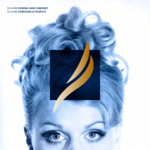 DownloadChronicle
DownloadChronicle
